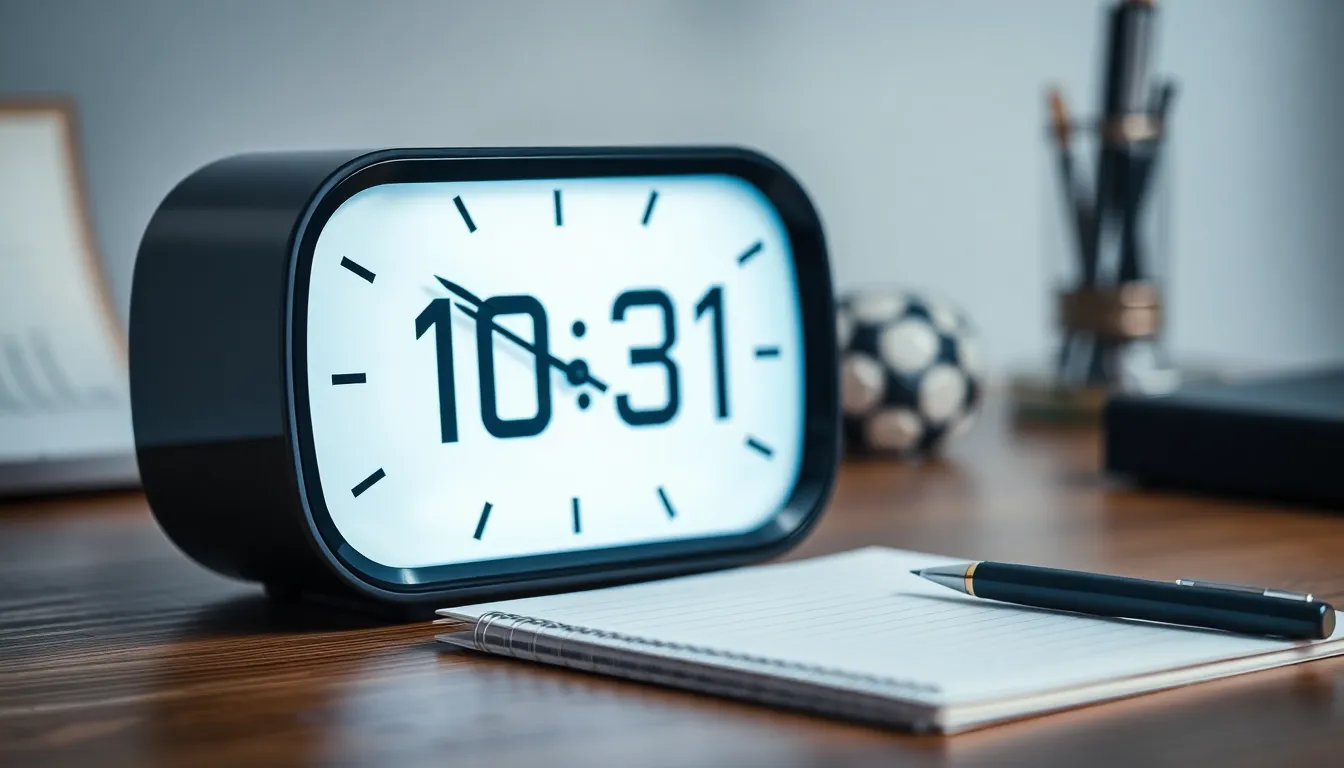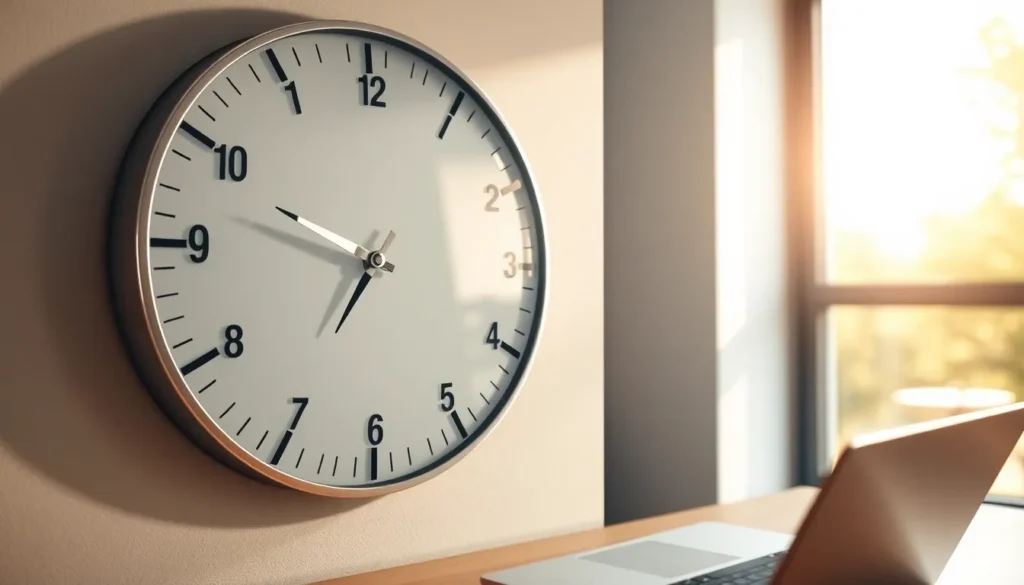Time management is essential in today’s fast-paced world. Whether it’s for a meeting, a deadline, or simply planning the day, knowing how long until a specific time can help individuals stay on track. The question of “how long until 10:31” might seem straightforward, but it can vary based on the current time and context.
Understanding this concept can aid in better scheduling and prioritizing tasks. With a few simple calculations, anyone can quickly determine the time remaining until that crucial moment. This article will explore various scenarios and methods to calculate the time left until 10:31, providing practical tips to enhance time awareness and efficiency.
Understanding Time Calculations
Calculating time accurately plays a crucial role in effective time management. Understanding the concept of time and its intervals enhances scheduling and prioritization.
The Concept of Time
Time consists of continuous progression, measured in hours, minutes, and seconds. Clocks divide time into 24-hour segments, allowing easy reference for planning activities. Every hour contains 60 minutes, facilitating precise calculations such as determining the remaining time until an event, like 10:31. Knowledge of these basic time units simplifies clock reading, scheduling, and managing daily tasks.
Importance of Knowing Time Intervals
Understanding time intervals aids in prioritizing and organizing tasks effectively. Recognizing how much time remains until 10:31 helps in decision-making and task scheduling. For example, if it’s currently 9:45, 46 minutes remain until 10:31. This time can be allocated for completing assignments or preparing for meetings. Awareness of time intervals prevents procrastination and enhances productivity by ensuring adequate time management for all activities.
How to Calculate Time Until a Specific Hour

Calculating time until a specific hour, like 10:31, involves understanding the current time and determining the difference. Here’s a structured approach to make this calculation easier.
Step-by-Step Guide
- Identify Current Time: Check the current hour and minute.
- Convert Current Time to Minutes: Calculate total minutes from midnight. Multiply the hour by 60 and add the minutes.
- Convert Target Time to Minutes: Similarly, convert the target time (10:31) into total minutes. For example, for 10:31, multiply 10 by 60, resulting in 600, then add 31, equaling 631.
- Calculate the Difference: Subtract the current time’s total minutes from the target time’s total minutes. The result gives the remaining minutes until 10:31.
- Convert Back to Hours and Minutes: If needed, convert the remaining minutes back to hours and minutes for easier understanding.
Using Clocks and Timers
Utilizing clocks and timers enhances accuracy in time calculation. Digital clocks display the exact time, aiding quick calculations. Setting a timer for specific intervals—like 10 minutes—also helps in managing tasks efficiently. For countdowns, apps or online timers can provide visual reminders, ensuring individuals remain aware of the approaching hour. Using tools like these makes time management more effective, allowing for better planning and prioritization of activities.
Practical Applications of Knowing Time Until 10:31
Understanding the time remaining until 10:31 offers valuable insights for personal and professional planning. Individuals can utilize this knowledge to enhance organization and efficiency.
Personal Planning
Knowing the time until 10:31 plays a critical role in personal planning. It allows individuals to break tasks into manageable intervals. By identifying the precise time remaining, one can prioritize essential activities. For example, if only 15 minutes remain, focusing on quick tasks like responding to emails becomes feasible. Allocating specific time slots for exercise, meals, or relaxation helps create a balanced schedule. Furthermore, this awareness helps minimize distractions and encourages proactive decision-making, leading to a more productive day.
Scheduling Events
Scheduling events efficiently is another key application of knowing the time until 10:31. With accurate time tracking, individuals can plan meetings, appointments, or social gatherings effectively. Knowing the exact minutes available allows better coordination with participants. For example, if an event starts at 10:31, starting preparation 30 minutes earlier ensures everything runs smoothly. Understanding how long until critical moments like presentations or phone calls promotes punctuality and reduces stress. Utilizing calendars and reminders in conjunction with this knowledge fosters a structured approach to managing commitments.
Knowing how long until 10:31 can significantly impact one’s ability to manage time effectively. By understanding the time remaining, individuals can prioritize tasks and make informed decisions about how to allocate their time. This awareness not only enhances productivity but also reduces stress associated with looming deadlines.
Utilizing tools like clocks and timers can further streamline this process. As people become more attuned to their time management skills, they’ll find it easier to maintain focus and stay organized. Embracing these strategies can lead to improved efficiency in both personal and professional settings, ultimately fostering a more structured approach to daily commitments.





